Sylabex / Wordmaker
Sylabex / Wordmaker was first published by Pepys in 1948.
Sylabex is a syllable word game devised by Ern Shaw which was first published by Pepys in 1948 containing 72 cards. The game was re-issued several times as follows: 2nd edition 1972 (45 cards) • 3rd edition 1975 (45 cards) • 4th edition c.1980 (45 cards) published by Castell Larby after merger. In 1984 the game was renamed “Wordmaker” (45 cards) and published by Gibson after Castell ceased trading. Each card has a three-letter syllable and the object of the game is to make complete words.
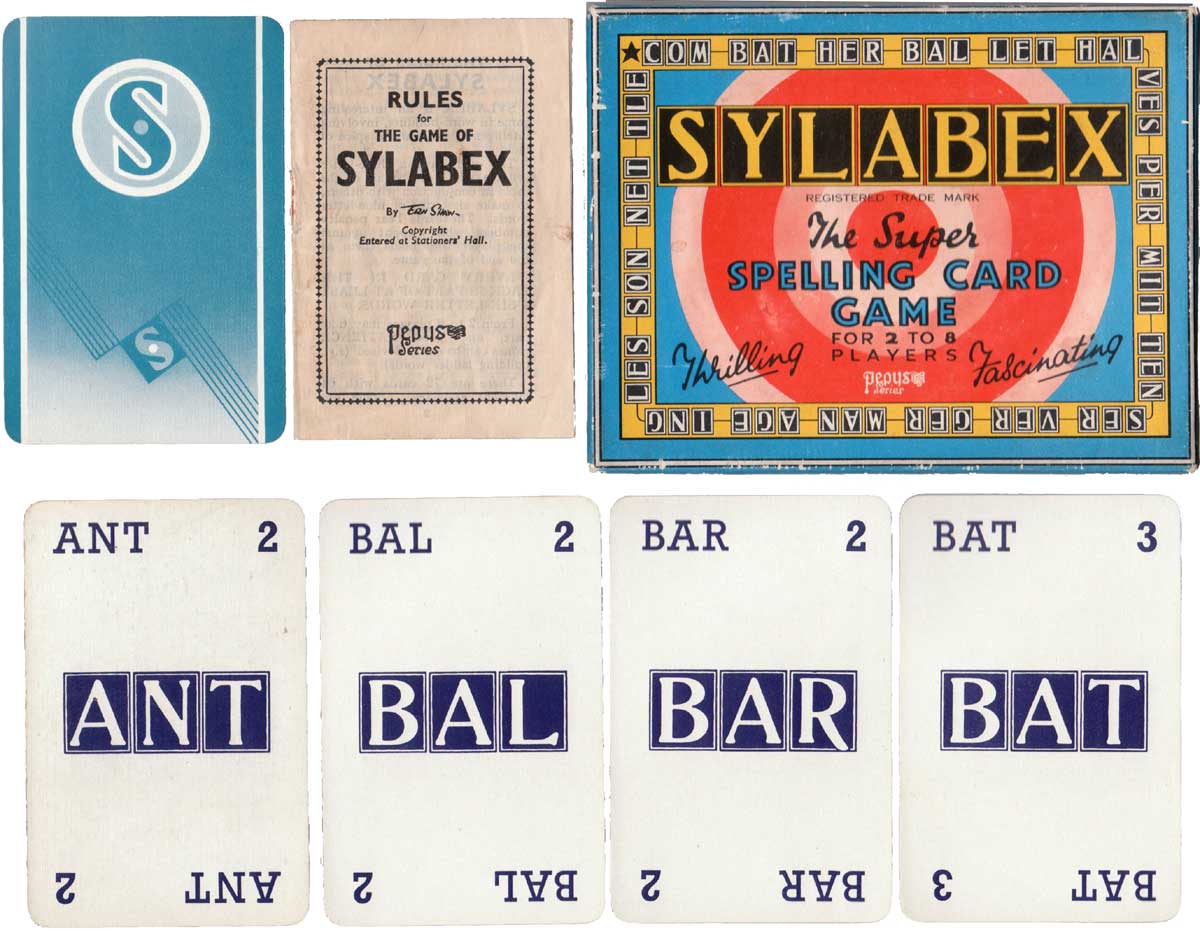
Above: Sylabex published by Pepys, first edition in a double sized lid and bottom type box with 72 cards, 1948.
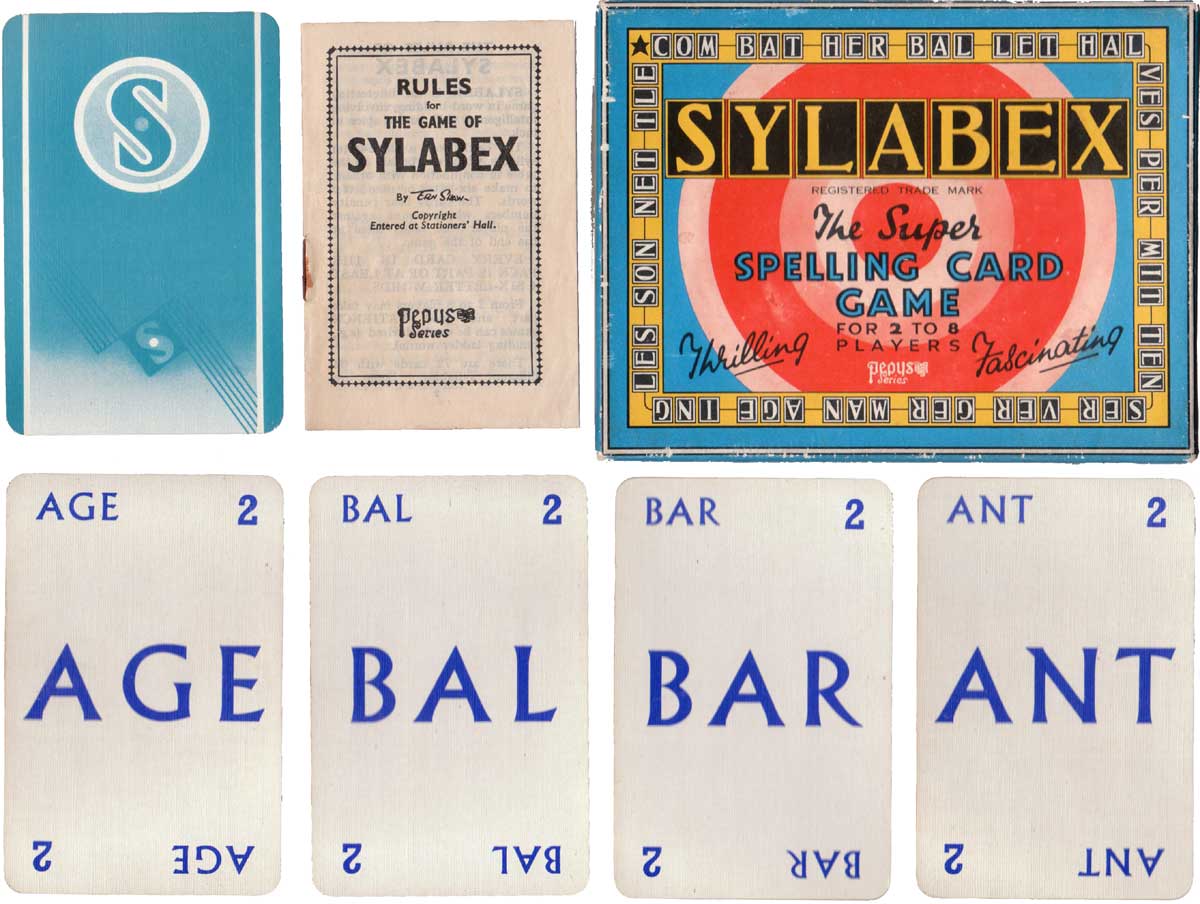
Above: Sylabex published by Pepys, 2nd edition in same large box but with new typeface on the cards, 1972.
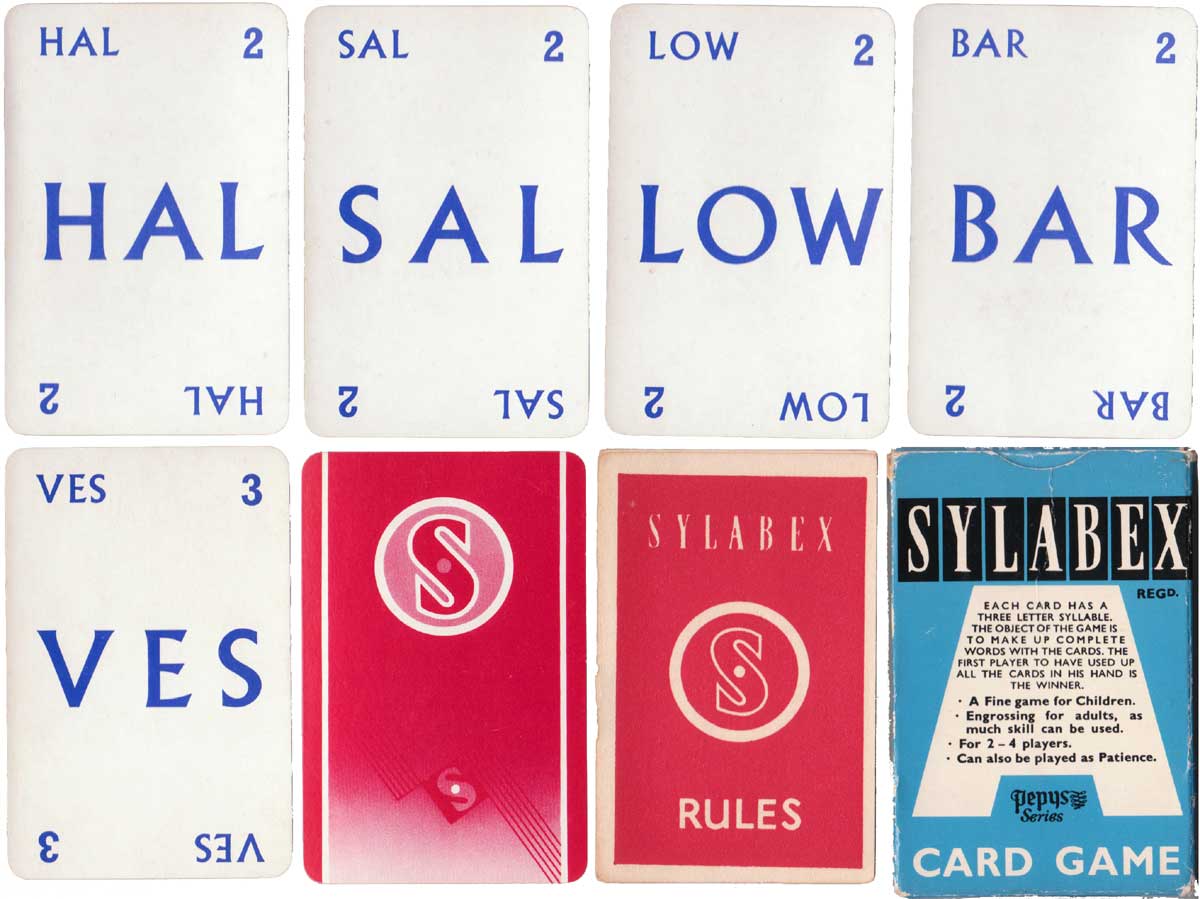
Above: Sylabex published by Pepys, 3rd edition in smaller tuck box, 1975.
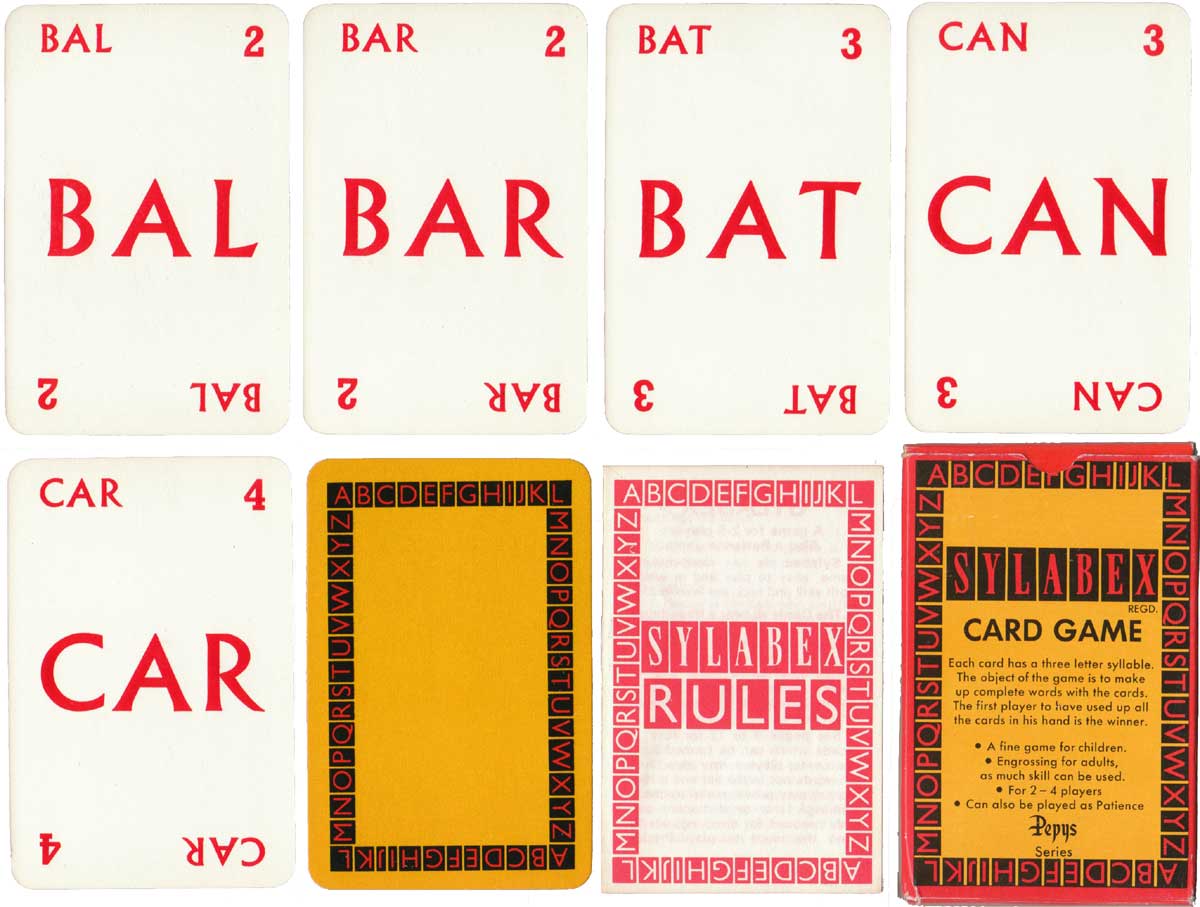
Above: Sylabex published by Pepys, 4th edition, c.1980.
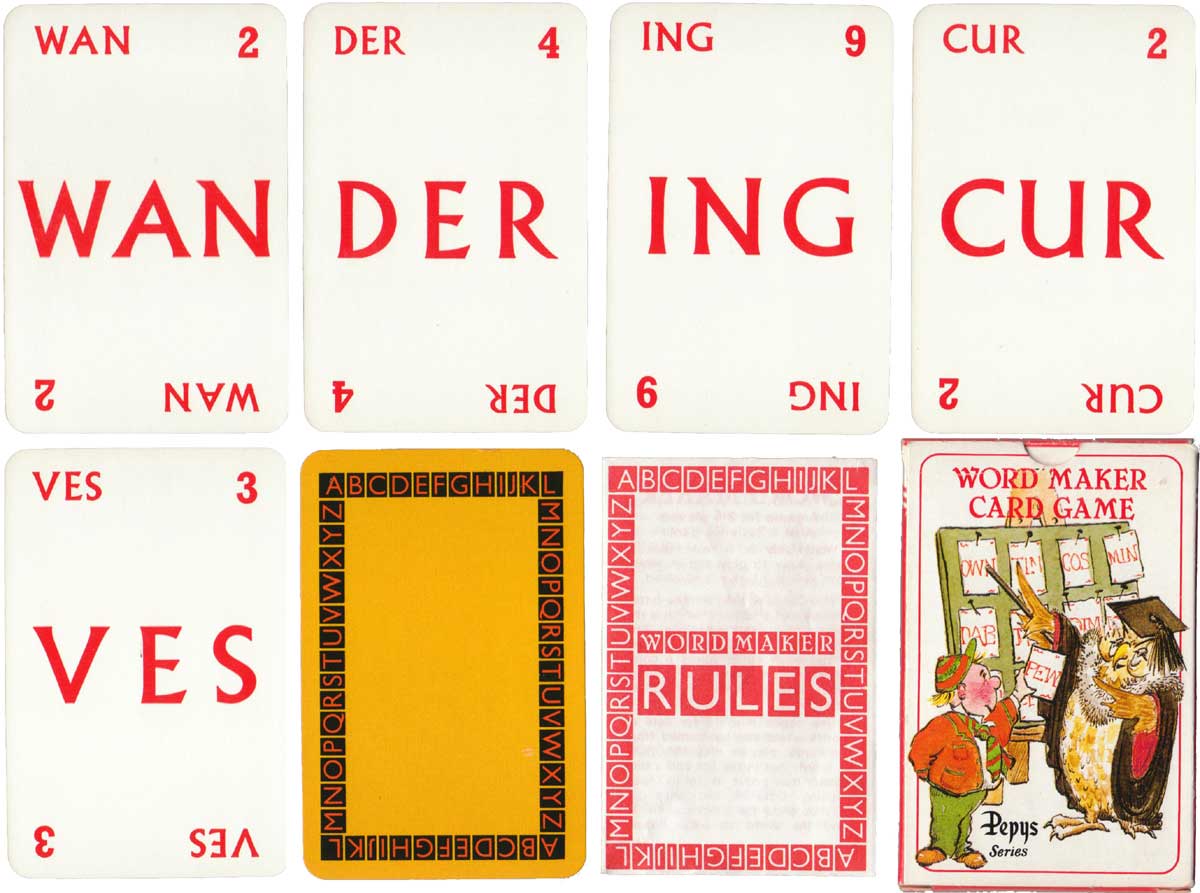
Above: Word Maker published by Gibsons, 1984.
By Rex Pitts (1940-2021)
United Kingdom • Member since January 30, 2009
Rex's main interest was in card games, because, he said, they were cheap and easy to get hold of in his early days of collecting. He is well known for his extensive knowledge of Pepys games and his book is on the bookshelves of many.
His other interest was non-standard playing cards. He also had collections of sheet music, music CDs, models of London buses, London Transport timetables and maps and other objects that intrigued him.
Rex had a chequered career at school. He was expelled twice, on one occasion for smoking! Despite this he trained as a radio engineer and worked for the BBC in the World Service.
Later he moved into sales and worked for a firm that made all kinds of packaging, a job he enjoyed until his retirement. He became an expert on boxes and would always investigate those that held his cards. He could always recognize a box made for Pepys, which were the same as those of Alf Cooke’s Universal Playing Card Company, who printed the card games. This interest changed into an ability to make and mend boxes, which he did with great dexterity. He loved this kind of handicraft work.
His dexterity of hand and eye soon led to his making card games of his own design. He spent hours and hours carefully cutting them out and colouring them by hand.

Related Articles
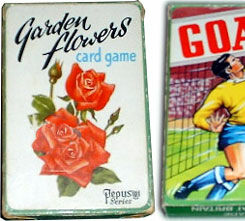
Pepys Games
The Story of Pepys Games by Rex Pitts
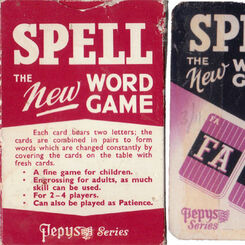
Spell
Spell word game published by Pepys Games, 1958.
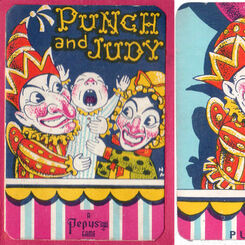
Punch & Judy
Punch and Judy card game published by Pepys, 1956.
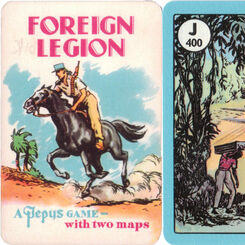
Foreign Legion
Foreign Legion published by Pepys, 1960.
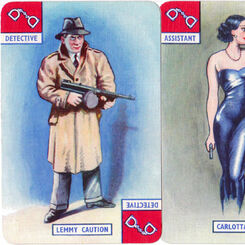
Crime Club
Crime Club card game by Peter Cheyney, issued by Pepys Games, 1939.

Speed 1st edition
The first edition of Speed by Pepys Games was published in 1938.

Secret Agent
Secret Agent by Pepys Games, the card game with the magic monocle, 1957.
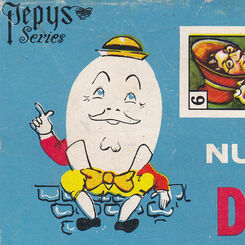
Picture Dominoes
Pepys published a total of 8 different pictorial domino games.

Find Out
Find Out mystery card game based on the Find Out books by Enid Blyton, published by Pepys, 1958.
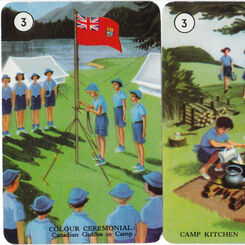
Guiding
Guiding card game published by Pepys in co-operation with the Girl Guides Association, 1958.
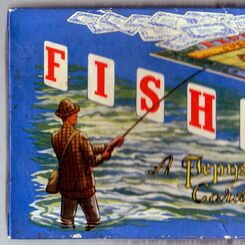
Fishing
Fishing published by Pepys Games, 1951.
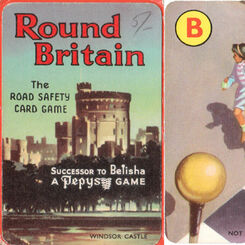
Round Britain
Round Britain card game published by Pepys Games, 1955.
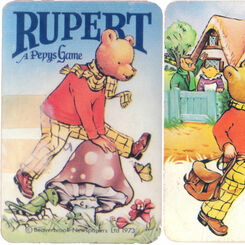
Rupert
Rupert, a Pepys Game, 1973.
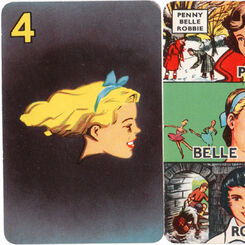
Girl
Girl card game published by Pepys Games, 1955.
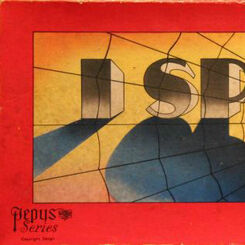
Board Games by Pepys
Pepys board games which may be interesting to see.

Panda’s Party
Panda’s Party published by Pepys Games, 1940.
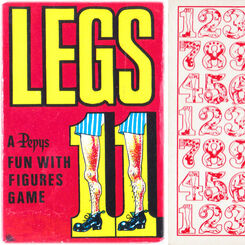
Legs Eleven
Legs Eleven card game by Pepys, 1974.
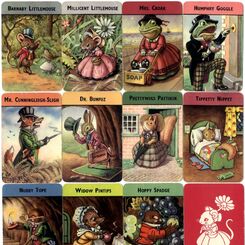
Woodland Snap
Woodland Snap is played with a pack of 44 cards illustrated with "Woodland" characters by Racey Help...
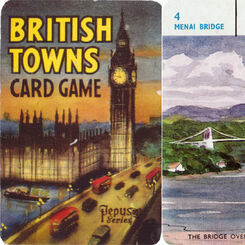
British Towns
British Towns Card Game by Pepys Games (Castell Brothers Limited).
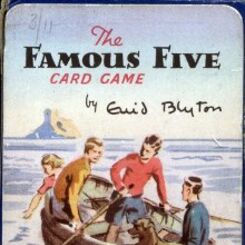
Famous Five
The Famous Five Card Game by Enid Blyton.
Most Popular
Our top articles from the past 60 days






















